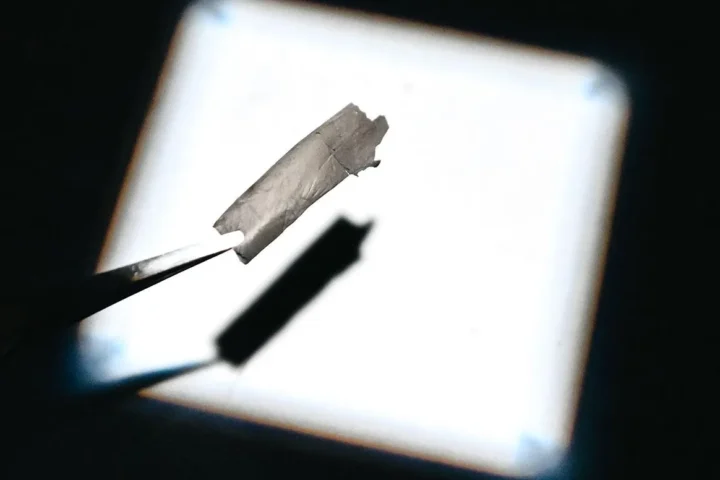John Cena’s openness about his skin cancer diagnosis has sparked a heavyweight discussion about sun protection and early detection. The WWE superstar and actor revealed he battled two separate basal cell carcinomas, transforming his approach to skin care and supporting the Neutrogena campaign. This comprehensive guide examines his journey, explores skin cancer statistics, treatment options, and provides essential protection strategies for long-term health.
The Champion’s Diagnosis Story
John Cena discovered his first cancerous spot on his right pectoral muscle during a routine dermatology visit. According to People magazine, he revealed: “It wasn’t until I went to a dermatologist and got a skin checkup and had a cancerous spot removed from my right pec.” A year later, doctors found another spot and removed it from his right shoulder.
Cena described receiving the diagnosis as deeply unsettling. He admitted: “I was stubborn. I didn’t want to have a routine, and I also thought the problem would never reach me. And it’s one of those things where I had a ton of exposure with minimal protection, and it caught up with me.” He credited his dermatologist for providing critical emotional support, noting how his doctor “held me by the hand and let me know that I wasn’t alone.”
Understanding Skin Cancer Types and Treatment Options
Basal Cell Carcinoma (BCC)
Basal cell carcinoma accounts for approximately 80% of all skin cancers diagnosed annually. According to the American Cancer Society, about 3.6 million cases of BCC are diagnosed each year in the United States. These cancers develop from abnormal growth of basal cells in the epidermis and rarely spread to other parts of the body.
BCC typically appears as:
- A pearly or waxy bump
- A flat, flesh-colored or brown scar-like lesion
- A bleeding or scabbing sore that heals and returns
Squamous Cell Carcinoma (SCC)
Representing about 20% of skin cancers, squamous cell carcinoma affects the upper layers of the epidermis. Approximately 1.8 million cases of SCC are diagnosed annually in the U.S. SCC is more aggressive than BCC and has a higher likelihood of spreading if left untreated.
SCC may appear as:
- A firm, red nodule
- A flat lesion with a scaly, crusted surface
- A raised growth with a central depression
Treatment Methods
Mohs Micrographic Surgery Mohs surgery represents the gold standard treatment for high-risk skin cancers. This precise technique offers cure rates up to 99% for primary basal cell carcinomas and 94% for recurrent cases. For squamous cell carcinoma, cure rates range from 92-99% for primary tumors and 90% for recurrent cases.
The procedure involves removing thin layers of cancerous tissue while examining each layer under a microscope until no cancer cells remain. This approach preserves maximum healthy tissue while ensuring complete cancer removal.
Alternative Treatments
- Standard Excision: Effective for low-risk lesions, involving surgical removal with clear margins
- Topical Therapies: Including 5-fluorouracil and imiquimod for superficial lesions
- Radiation Therapy: For patients who cannot undergo surgery
The Critical Role of Early Detection
The ABCDE Method
Monthly self-examinations using the ABCDE criteria can catch skin cancers early:
- Asymmetry: One half doesn’t match the other
- Border irregularity: Edges are ragged or notched
- Color variation: Multiple colors present
- Diameter: Larger than 6mm (pencil eraser size)
- Evolving: Changes in size, shape, or color
Professional Screening Guidelines
The American Academy of Dermatology recommends annual professional skin exams for everyone. Those with prior skin cancer need more frequent monitoring:
- BCC survivors: Every 6-12 months
- SCC survivors: Every 3-6 months for the first two years
Expert Analysis and Clinical Recommendations
Dr. Neera Nathan, dermatologist and Neutrogena campaign expert, emphasized the importance of “invisible finish” sunscreens in reducing barriers to daily use among men. The Skin Cancer Foundation recommends broad-spectrum, water-resistant SPF 30+ formulas reapplied every two hours and after swimming or sweating.
Recent NIH-funded studies project a concerning 30% increase in early-onset cancers by 2030. Between 2010 and 2019, early-onset cancer incidence rose by 79.1%, with breast, colorectal, kidney, and uterine cancers showing the fastest growth. Researchers identified 14 cancer types increasing among people under 50, though cancer deaths in this demographic have not increased overall.
The Gender Gap in Sun Protection
Statistics reveal a significant disparity in sunscreen usage between genders. According to the CDC’s 2020 National Health Interview Survey, only 12.3% of men compared to 29.0% of women always use sunscreen when outside for more than an hour on a sunny day.
The gender gap is particularly pronounced in younger age groups:
- Men aged 18-29: 8.2% always use sunscreen
- Women aged 18-29: 25.7% always use sunscreen
This disparity persists across all age groups, with women consistently outpacing men in sun protection behaviors.
Contributing Factors to Male Sunscreen Avoidance
Research identifies several reasons for men’s reluctance to use sunscreen:
- Social perception of sunscreen as “unmasculine”
- Concerns about greasiness or texture
- Less frequent healthcare visits
- Targeted marketing primarily to women
- Lower awareness of skin cancer risks
Comprehensive Sun Protection Strategies
Proper Sunscreen Application
The American Academy of Dermatology provides specific guidelines:
- Apply 15-30 minutes before sun exposure
- Use approximately 1 ounce (shot glass amount) for full body coverage
- Reapply every two hours or after swimming/sweating
- Choose broad-spectrum SPF 30 or higher
Beyond Sunscreen Protection
Effective sun safety requires multiple approaches:
Physical Barriers
- UPF-rated clothing offers superior protection
- Wide-brim hats shield face, neck, and ears
- UV-blocking sunglasses protect delicate eye area
- Seek shade during peak UV hours (10 AM – 4 PM)
- Environmental Considerations
- Choose reef-safe mineral formulations to protect marine ecosystems
- Consider adjunct antioxidants (vitamins C, E, beta-carotene) that may enhance skin defense
- Be aware of reflective surfaces like water, snow, and sand that increase UV exposure
Neutrogena’s Campaign Impact
Neutrogena’s “Sunscreen You Can’t See” campaign leverages Cena’s global popularity to normalize male sun protection. The campaign specifically addresses barriers to sunscreen use among men, featuring Cena’s signature invisibility gag to make the product’s clear finish relatable.
Talker Research conducted for the campaign surveyed 500 Hispanic and 500 general Americans, finding that 30% never receive professional skin checkups. Only 18% of men versus 27% of women routinely receive advice to use SPF daily, highlighting the need for targeted male outreach.
Long-Term Survivorship and Follow-Up
Post-cancer care requires structured surveillance:
Medical Monitoring
- Regular dermatological examinations based on cancer type
- Documentation of new lesions or changes
- Coordination with primary care for holistic health management
Self-Care Strategies
- Monthly self-examinations using body maps
- Digital photography to track mole changes
- Sun protection integration into daily routines
Psychosocial Support
- Connection with survivor communities
- Professional counseling if needed
- Family education about inherited risk factors
Similar Posts
Historical Context and Scientific Evolution
Sunscreen development has progressed significantly since the 1930s. The evolution of sunscreen science shows remarkable advancements:
- 1903: Franz Greiter patents first chemical UV filter
- 1978: FDA formalizes SPF testing standards
- 2012: Introduction of SPF 50+ consumer products
- 2025: Development of bioadhesive nanoparticle formulations
Current research focuses on improving sunscreen adherence, reducing environmental impact, and developing next-generation protective technologies.
Cost Considerations and Accessibility
Sunscreen cost creates barriers for many Americans. Studies show significantly lower usage among lower-income households, suggesting economic factors influence protection behaviors. Community interventions like providing shade in public spaces and subsidized sunscreen programs could address these disparities.
Future Implications and Research Directions
The rising incidence of early-onset cancers demands immediate attention. Future research priorities include:
- Understanding risk factors specific to younger populations
- Developing targeted interventions for high-risk groups
- Examining international trends for global perspectives
- Creating culturally appropriate prevention strategies
Practical Implementation: Championship Habits
Successful sun protection requires systematic approaches. Just as health awareness requires consistent attention to various risk factors, skin protection demands daily vigilance.
Daily Routine Integration
- Pair sunscreen application with existing habits (toothbrushing, coffee)
- Set smartphone reminders for reapplication
- Keep multiple tubes in convenient locations
Family Strategies
- Model behavior for children
- Make sun protection a family value
- Create fun educational moments about skin health
Environmental Stewardship
Sustainable sun protection benefits both personal and planetary health. Environmental sustainability remains a core concern as we address health challenges. Reef-safe mineral sunscreens protect marine ecosystems while providing effective UV protection. This dual benefit aligns personal wellness with environmental responsibility.
The Business Case for Prevention
Regular sunscreen use provides economic benefits. Studies on skin cancer prevention economics demonstrate significant cost savings:
- Reduced healthcare costs from cancer treatment
- Prevention of premature aging and associated cosmetic treatments
- Maintained quality of life and productivity
- Long-term mental health benefits from proactive self-care
John Cena’s Message: Championship Mindset
Cena’s transformation from sun exposure neglect to vigilant protection demonstrates that lifestyle changes are possible at any age. His partnership with Neutrogena sends a powerful message: protecting your skin isn’t vanity—it’s essential health management.
“That phone call’s not one you want to get,” Cena shared about his diagnosis. His openness helps normalize conversations about male health, encouraging others to prioritize prevention over consequence management.
Regional Considerations
Geography significantly impacts skin cancer risk:
- Higher rates in sunny climates like Hawaii and Florida
- Increased risk at high altitudes
- Reflection from snow, water, and sand amplifies exposure
- Indoor tanning remains a controllable risk factor
Special Populations
Certain groups require targeted attention. Similar to how food safety concerns require special vigilance for vulnerable populations, sun protection needs vary across demographics:
- Outdoor workers face occupational UV exposure
- Athletes need sport-specific protection strategies
- Immunocompromised individuals have elevated cancer risks
- People of color, while at lower melanoma risk, still need protection
Beyond Statistics: Personal Agency
While statistics inform us, individual action transforms outcomes. Cena’s journey illustrates how one person’s vulnerability can become a strength, inspiring others to prioritize health through simple daily choices.
Conclusion: The Long Game Strategy
John Cena’s skin cancer experience transforms a personal health challenge into a public service. His advocacy through the Neutrogena campaign normalizes male sun protection, potentially saving countless lives through early detection and prevention.
The evidence is overwhelming: consistent sun protection dramatically reduces skin cancer risk. Daily SPF 15 use can lower melanoma risk by 50% and squamous cell carcinoma risk by 40%. These statistics represent more than numbers—they represent preserved life experiences, maintained family connections, and sustained personal goals.
Modern sun protection extends beyond individual benefit to encompass environmental responsibility. Choosing reef-safe formulations protects marine ecosystems while safeguarding human health. This interconnected approach reflects a growing understanding that personal wellness and planetary health are inseparable.
The championship mindset Cena promotes—training daily for long-term success—applies perfectly to skin protection. Small daily actions (sunscreen application, seeking shade, wearing protective clothing) accumulate into lifelong cancer prevention. Like athletic training, consistency matters more than perfection.
Practical Takeaways for Daily Champions:
- Establish Non-Negotiable Habits: Apply broad-spectrum SPF 30+ every morning, regardless of weather
- Monthly Self-Examinations: Use the ABCDE method and photograph suspicious spots
- Annual Professional Screenings: Schedule dermatology visits like other preventive care
- Reapplication Strategy: Set phone alarms for every two hours when outdoors
- Family Integration: Model behavior and educate children about sun safety
- Quality Product Selection: Choose reef-safe, broad-spectrum formulations appropriate for your skin type
Long-Term Societal Benefits:
- Reduced healthcare costs from cancer prevention
- Normalized male health discussions and behaviors
- Enhanced quality of life across demographics
- Environmental protection through conscious product choices
- Cultural shift toward proactive health management
Cena’s message resonates beyond celebrity endorsement—it’s a call to action for preventive health management. His transformation from someone who “never” used sunscreen to a daily advocate demonstrates that change is possible regardless of past habits.
The early-onset cancer trends demand immediate response. While we cannot change genetic predispositions, we can control environmental exposures. Sun protection represents one of the most effective, accessible interventions available.
Looking ahead to 2030 and beyond, Cena’s advocacy positions sun protection as a fundamental health practice, not an optional enhancement. The rising early-onset cancer rates make this message increasingly urgent. By combining celebrity influence with scientific evidence, the campaign creates a powerful platform for behavioral change.
The fight against skin cancer requires championship dedication—daily training, consistent execution, and long-term commitment. Cena’s journey proves that even champions face vulnerabilities, but true strength lies in transforming those challenges into opportunities for education and advocacy.
The ultimate victory isn’t just defeating cancer—it’s preventing it altogether. Through proper sun protection, early detection, and sustained vigilance, we can significantly reduce skin cancer’s impact on individuals, families, and communities. Cena’s story transforms a personal health scare into a public health triumph, demonstrating how vulnerability can become strength when channeled toward positive change.

As we face rising cancer rates and environmental challenges, the intersection of personal health and planetary wellness becomes increasingly clear. Choosing sustainable sun protection products, advocating for public shade structures, and normalizing health conversations across gender lines creates a comprehensive approach to cancer prevention.
The championship belt in this fight belongs to everyone willing to prioritize daily protection over delayed treatment. Cena’s partnership with Neutrogena makes that championship accessible to all, proving that in the battle against skin cancer, everyone can emerge victorious through consistent, informed action.


















